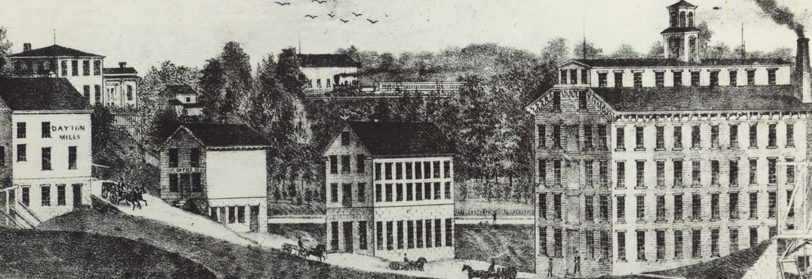OLD PIONEER GONE
Resided in County for Seventy-Eight Years
JESSE GREEN GONE TO HIS REWARD
The End Came Peacefully at Ryburn Hospital Saturday Night – Had Been For Years Actively Identified With Life of County
Jesse Green died at six o’clock Saturday night at Ryburn hospital. To the younger generation, and to the newcomers among us, that may not mean much. But to the old residents of the county, it will come as the notice of the close of a long eventful and useful life. As man and boy he had lived in La Salle county for almost eighty years. The notice of his death will be read with regret by a wide circle of friends.
Jesse Green was born in Newark, Ohio, in 1817. With his father, John Green, he came to Dayton in 1829. Father and son were long identified with the growth of the county in many ways. The elder Green built the first mill at Dayton, the first flour being ground there on July 4th, 1830. A sawmill was also run in connection and it furnished the lumber to build the first frame house in Ottawa in 1831.
In 1840 they built the first woolen mill with power looms in the state. This ran very successfully until the close of the war. In the early 70’s they met with a series of reverses, but Jesse Green bought in the property and ran it until 1882, when it was sold to Williams and Hess. They organized a stock company for the manufacture of pressed brick.
In 1849 Jesse Green was one of an adventurous party of about fifty others who made the overland trip to California. After remaining in the west two years he returned to La Salle county to make it his home until his death.
He was married June 22, 1843, to Isabella Trumbo, daughter of Mathias and Rebecca Trumbo. His first wife died December 1, 1854, leaving five children – John B., Rollin T., Newton M., Clara J., and an infant who died soon after her mother. Mr. Green subsequently married Hannah Rhoades, a native of Brownsville, Pa. From this second marriage, nine children were born – Thomas H., Joseph, James A., Cora R., Sarah (deceased), Frank, Jesse A. (deceased), John K. and Mabel (deceased). In politics Mr. Green was a Democrat. He was a Universalist in religious faith. He has served three years and supervisor, two terms as justice of the peace, and about six years as postmaster at Dayton.
The children now surviving are Newton M., of Serena; Mrs. C. B. Hess, of this city; Thomas H., Frank, and J. Kent, of Chicago; Joseph, of Coffeyville, Kansas; James A., of Grand Junction, Col.
The funeral will be held from the C. B. Hess residence Monday afternoon at 2 o’clock. Interment in the Dayton cemetery.1
- The Ottawa [Illinois] Free Trader, 11 October 1907, p 5, col 3




